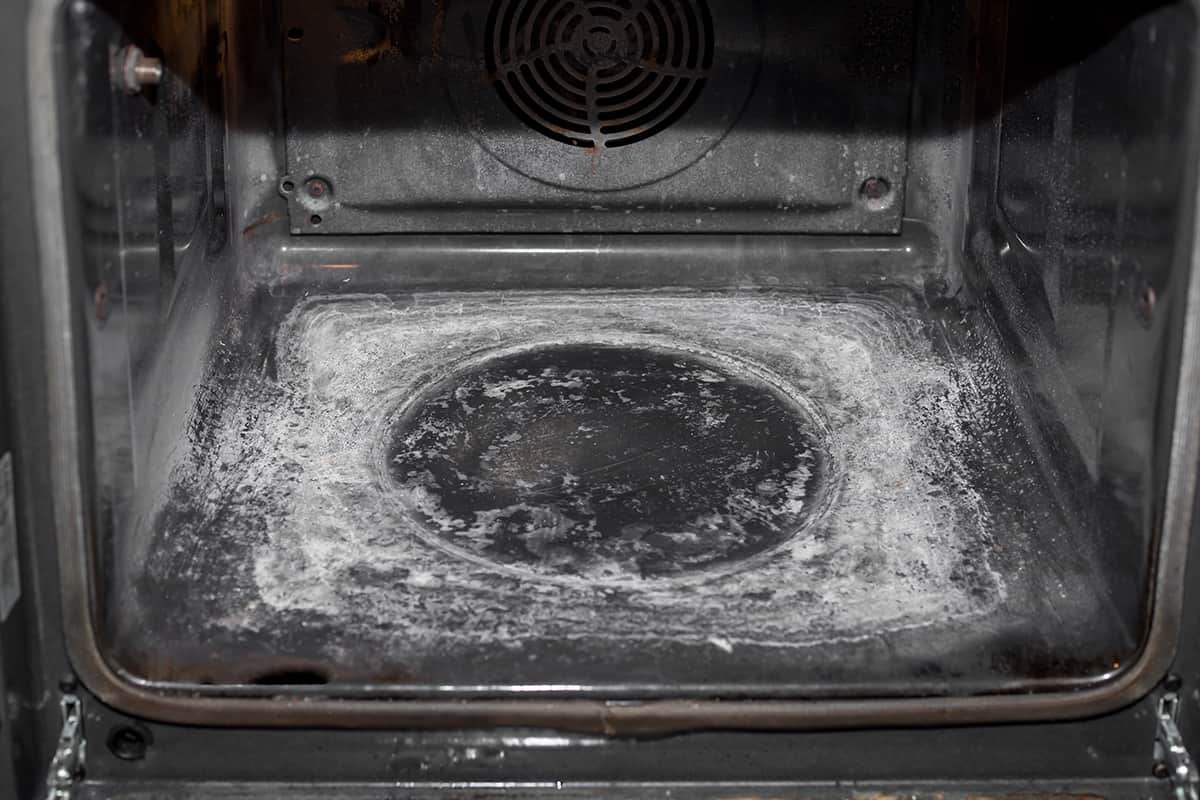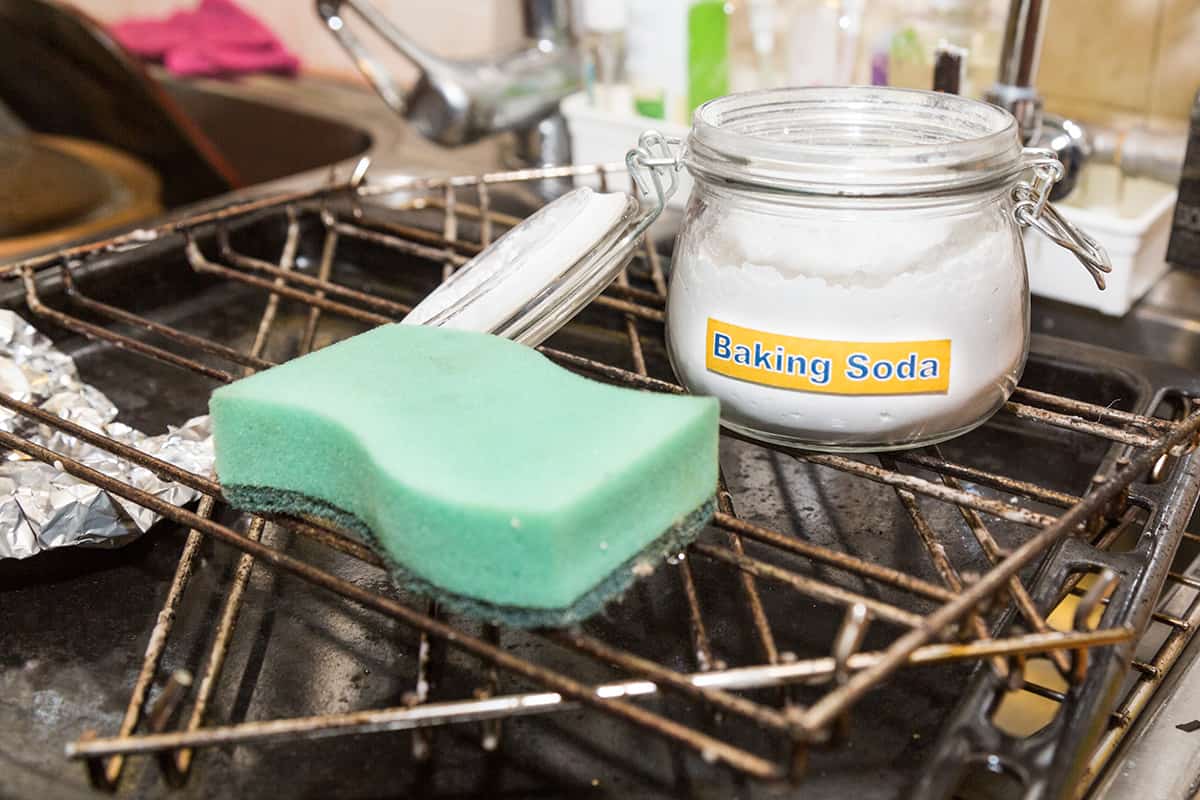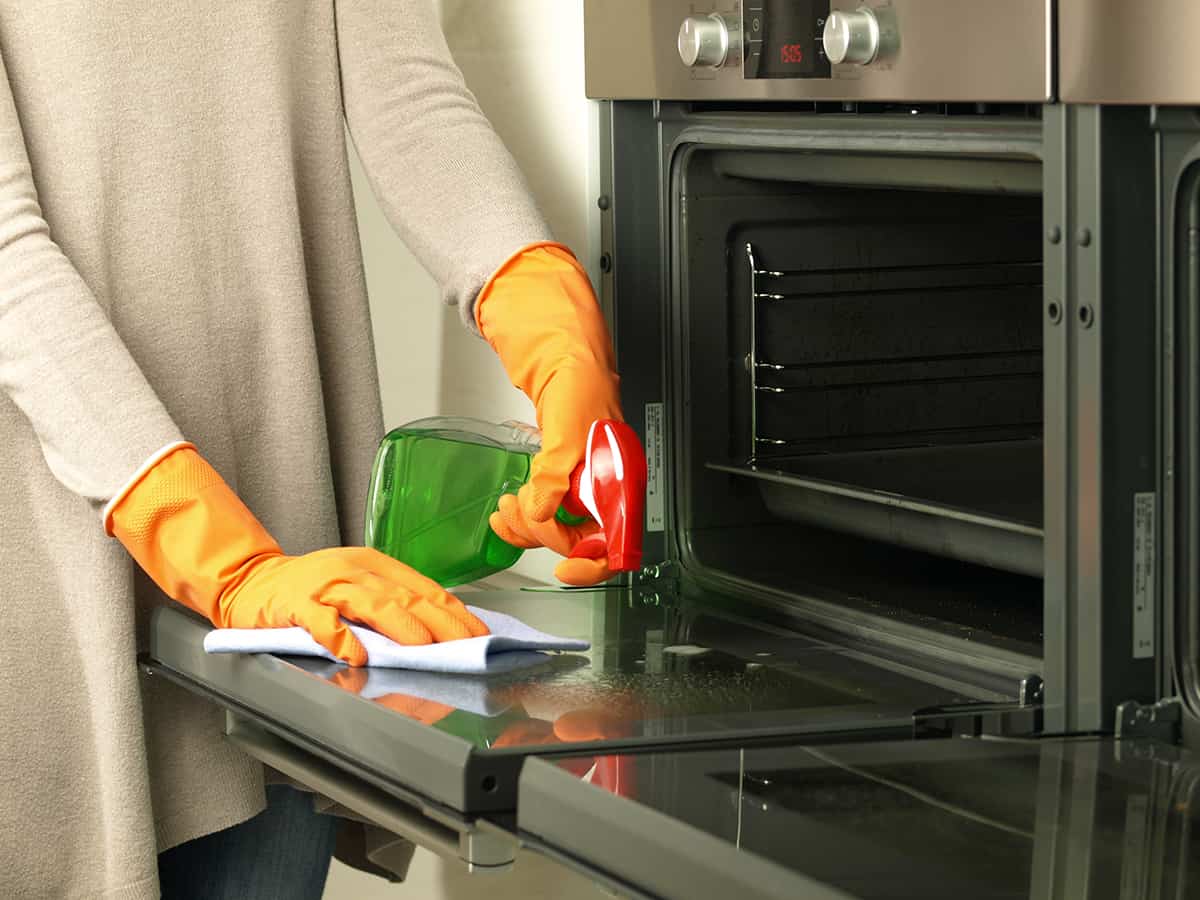There’s nothing worse than having to scrub off the caked-on debris inside your oven manually. Thankfully, there are self-cleaning ovens that do most of the dirty work for you. So, can you amplify the effectiveness of a self-cleaning oven by using a commercial oven cleaner?
You should never use a commercial oven cleaner whenever you turn on your oven’s self-clean cycle. These cleaners contain all sorts of chemicals that can react unpredictably to extreme heat, which can create a toxic environment inside your oven.
So, how do you use a self-cleaning oven? And when should you use a commercial oven cleaner? I’ll answer these questions and a lot more down below.
What’s a Self-Cleaning Oven?

As its name suggests, a self-cleaning oven is an oven that cleans itself. Well, the “self-cleaning” label can be a bit misleading since there is still a lot of manual labor that goes into cleaning an oven, even after running the self-cleaning cycle.
The self-cleaning feature heats the even to up to 1,000°F, which is about twice as hot as a residential convection oven goes. The entire cycle takes about 2 hours to complete, during which time the oven nukes all of the caked-on debris, turning them to ash. After the oven has come down to room temperature (about 2 hours after the nuking process), all you have to do is use a damp towel to wipe away the ashes.
There is another type of self-cleaning oven that uses steam instead of heat. You have to pour distilled water on the floor of the oven’s interior before starting the self-clean cycle, which heats the water up to about 250°F. The water turns to steam to loosen debris from the floor and walls. After the steaming process, you can clean up the loosened debris with a dampened towel.
Should You Use Oven Cleaner on a Self-Cleaning Oven?
Commercial oven cleaners help loosen caked-on debris in an oven. The chemicals react with the solid food remnants, and after a bit of time, the residue will dislodge from your oven’s walls, floors, and racks, making it easier to wipe them away. So, should you enhance the self-cleaning powers of an oven by using an oven cleaner as well?
No, you shouldn’t. There is no way to tell how the chemicals in the oven cleaner will react to extreme heat. It’s possible that the chemicals can be baked into the oven’s floors, walls, and accessories to create an unfriendly environment for future baking endeavors. So, whenever you want to run a self-clean cycle, you should never use an oven cleaner or any chemical-heavy product in the oven at the same time.
How to Use the Self-Clean Feature in a Self-Cleaning Oven
The great thing about self-cleaning ovens is that it does most of the dirty work for you. However, there’s still a bit of prep you need to do to improve the effectiveness of the self-clean cycle.
To use the self-clean feature in your oven, here’s what you have to do:
Remove large chunks of food debris by hand. Even though a 1,000°F oven will disintegrate almost anything, you should still do your best to remove the larger food remnants from your oven. This will make it less cumbersome to wipe away the ashy products of the charred food particles.
Take out the oven’s racks, trays, and other accessories. The oven’s walls, ceiling, and floors are designed to withstand the super-hot temperature of a self-clean cycle, not its accessories. However, you should consult your oven’s paperwork to see whether or not the trays and racks can go in the oven during a self-clean cycle. Most dark or enamel-coated racks and trays can withstand the heat.
Start the self-clean cycle. Most oven models require a single press of a button to get started. This will automatically engage the locking mechanism, making it nearly impossible to open the oven’s door while it’s heating and cooling down. For ovens with manual locking levers, you’ll have to lock the door before pressing the self-clean button. The self-clean cycle takes about 30 minutes to complete.
Let the oven rest for 2 hours after the self-clean cycle is complete. Although the self-clean process takes just about half an hour to complete, the door’s lock may still be engaged. This is to prevent the user from popping open the door while the temperature of the oven is still extremely hot. When the lock has disengaged, it’s safe to open the oven door. If your oven has a manual locking lever, wait at least 2 hours to let the oven come back down to room temp.
Wipe the floor and walls of your oven with a moistened towel. Ashy residue is a clear sign that the self-clean cycle has done its job. The only thing left to do is remove the residue by wiping down the oven’s interior with a damp cloth.
However, you should know that the self-clean feature does not work as effectively in cleaning the oven door. You will have to find an alternative method for cleaning the door. Might I suggest using a commercial oven cleaner?
When to Use an Oven Cleaner
If you’ve used an oven before, you’ll know when it needs to be cleaned. For those who are new to the baking game, you should manually clean your oven whenever your oven is dirty. Some might suggest cleaning your oven once a week, while infrequent bakers can get by with cleaning the oven once every month or so.
You can use an oven cleaner whenever you want to clean your oven manually. However, because of its chemical composition, you should avoid using it too frequently. Instead, after each baking journey, you should wipe down your oven to get rid of all food remnants clinging to the walls, racks, and floor. It’s only when there are minimal amounts of caked-on debris that you should resort to using an oven cleaner.
Oven Cleaner Substitutes

I know that I’ve painted oven cleaners in a pretty unflattering light by mentioning their chemical base. For this reason, I highly suggest you look for alternative oven cleaners. The best thing I can suggest you use is mixing baking soda and water.
You can create a watery mix by combining 1:4 parts of baking soda and water. After mixing the ingredients, use a clean towel to apply the mix onto your oven’s walls, floor, ceiling, and racks. Scrub vigorously to get rid of set-in debris before going back with a clean towel.
However, to get rid of the worst stains in your oven, you should make a baking soda paste. Mix 2:1 parts of baking soda and water and apply the paste to the oven’s stains. Let the paste sit for about 5 minutes before using a clean towel to wipe it off. This is especially helpful for getting rid of melted plastic and debris on the oven’s glass door.
How Often Should You Run a Self-Clean Cycle?
The self-clean feature of an oven should only be used when there’s far too much caked-on debris to remove by hand or when you cannot remove the debris with elbow grease. A general rule is that you should run a self-clean cycle once every 2 months, but with proper oven maintenance, you might not even have to run the self-clean feature at all.
With that said, is it worth getting a self-cleaning oven? Yes, it is, especially if you’re a hardcore baker. There may come a time when you cannot remove the debris from your oven. During these moments, you’ll be glad that you can nuke your problems away!






